BeoVox 4000
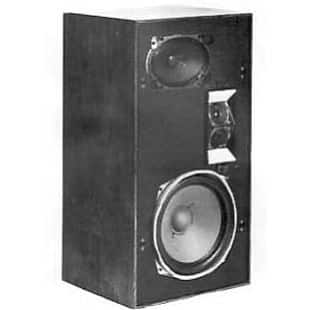

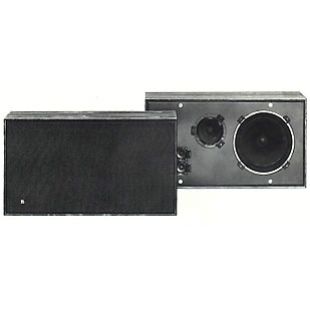
Beovox 3000 was the ideal smaller loudspeaker for the Beolab system: it had a special bass unit, a separate mid-range and two high frequency units. There was provision for individual adjustment of mid-range and high-frequency levels, and a socket for a high-frequency diffuser (Beovox 2500).
Beovox 3000 type 6220 and 6238 was a pressure-chamber loudspeaker with a specially-designed bass unit, a separate mid-range speaker and two high-frequency speakers – a total of four units. There was a crossover network and provision for individual adjustment of mid-range and high-frequency levels. There was also provision for the connection of a high-frequency diffuser. The maximum power handling capacity was 50 Watts.
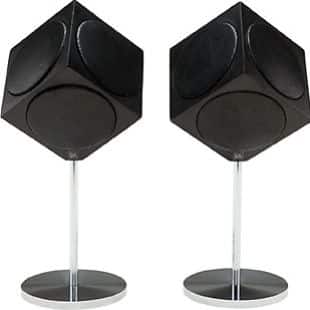
Beovox 2500 Type 6211 were ‘cube tweeter’ speakers, launched at the same time as the innovative BeoLab 5000. The Beovox 2500 Cube loudspeakers were developed to complement both the Beomaster 5000 and BeoLab 5000 in order to spread the high tones. For decades, controlling the directivity and dispersion of particularly the higher frequencies has been a key concern for loudspeaker designers worldwide.
The ability to control the higher frequencies is crucial, as they carry the majority of sonic information about what you are listening to, and where the sound is coming from. During the 1960s, Bang & Olufsen’s Acoustic Engineers were just as concerned with creating a “quality stereo” experience. Whereas it did not matter just how bass frequencies were distributed (as the human ear cannot differentiate the direction of low frequencies) the problem of ensuring good dispersion of midrange and treble frequencies has always persisted.
The problem back then was the same as today; whereas there is no directional problem with the bass, how to ensure dispersion of the midrange and treble? The focus was on the treble, as the higher the frequency range, the narrower the field of dispersion. Beovox 2500 Cube, released in 1967, was an attempt at an omni-directional treble loudspeaker, where the six driver units in the cube-shaped cabinet overlapped to cover all fields. The six driver units, one on each face of the cube, presented a rather special placement problem, which was solved by balancing the loudspeaker on one of the corners. It could therefore rest on a stand or hang from the ceiling.
Of course, with the overlapping fields and reflections from walls, floor and ceiling, the solution wasn’t perfect, but the Beovox 2500 Cube received universal acclaim from audiophile circles at the time for its ability to provide omnipresent sound. Its compact proportions and design, as well as the idea behind it have all contributed Beovox 2500 Cube’s current status as a cult product.
With its six high-frequency tweeters radiating in all directions, Beovox 2500 could be base- or wall-mounted, or even mounted from the ceiling. The compact speakers ensured complete spatial distribution of the highest notes, and its maximum power handling capacity in the range above 2000 Hz was 60W. The speaker was the ideal tweeter for a Beolab system. It could be connected to Beovox 5000 and Beovox 3000.
At the 1967 spring fair in Hanover, B&O and Jacob Jensen – the designer of the speakers – received the IF award for the Beomaster 5000, BeoLab 5000 and Beovox 2500 Cube loudspeakers for outstanding and user-friendly design.
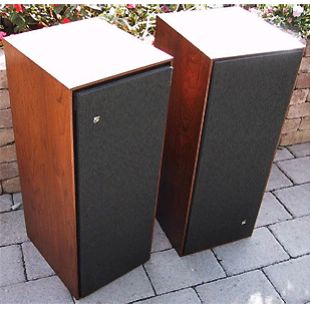
“B&O loudspeakers will meet very exacting conditions as their specifications exceed international hi-fi standards. All B&O speakers are of the pressure-chamber type with an impedance of 4 ohms. They are available in matched pairs only in a choice of teak or Brazilian rosewood finish” – taken from the 1967 – 1968 Bang & Olufsen product catalogue

“B&O loudspeakers will meet very exacting conditions as their specifications exceed international hi-fi standards. All B&O speakers are of the pressure-chamber type with an impedance of 4 ohms. They are available in matched pairs only in a choice of teak or Brazilian rosewood finish”
– taken from the 1967 – 1968 Bang & Olufsen product catalogue
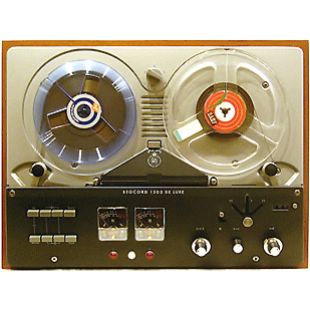
“If you already own a hi-fi music system or a good radio set with a tape socket – in other words, if you have an amplifier system capable of replacing that provided in a tape recorder you may prefer this 2-track recording machine. Technical specifications are equal to those of the Beocord 2000de Luxe K, but there is no mixer section or output amplifier.
The Beocord 1500 de Luxe has built-in playback pre-amplifiers and is sold complete with gramophone/radio record pre-amplifier. This recording pre-amplifier may be exchanged for a microphone pre-amplifier if direct microphone recordings are required.
Dimensions: 205mm high, 450mm wide, 335mm deep. Choice of teak or Brazilian rosewood finish” – taken from the 1967 – 1968 Bang & Olufsen product catalogue.
Beocord 1500 DL was a stereo tape recorder which you could use with an existing stereo system. There was no built-in amplifier or microphone – the unit’s raison d’être was a means to make really good recordings from records or the radio. A single stereo input channel of standard DIN level was the only source, but two outputs were provided: one of a fixed DIN level, and the other (Line) of a variable level controlled by a concentric (L,R) knob on the control panel. With a special lead and the correct Beomaster, it was possible to do off-tape monitoring during recordings (although by using standard DIN connection through the ‘radio’ socket this function was not available).
An elegant steel undercarriage on smooth-running castors was separately available for the Beocord models at that time. It was available in two versions: for Beocord 1100/Beocord 2000 de Luxe T, and Beocord 1500 de Luxe/Beocord 2000 de Luxe K, respectively.
Beocord 1500 DL was replaced by Beocord 1800 in 1970, which looked very similar but included several detail improvements, such as a die-cast chassis and optical automatic stop. Mechanically, Beocord 1500 DL was the same as Beocord 2000 DL and was offered in the same way in either 2 track + 4 track replay and 4 track only models. The Beomaster 900 RG Compact radiogram featured a recess of the exact size to fit Beocord 1500 DL which made it into a complete audio system.
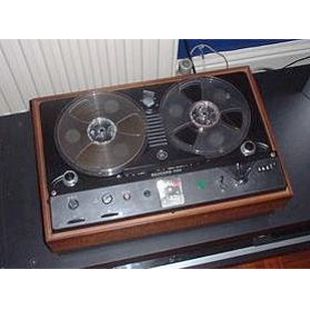
Beocord 1100 – an all-transistor 2-track hi-fi mono recorder possessing a maximum of technical features: 3 tape speeds: 4.75cm/sec (recording of speech), 9.5cm/sec (recording of gramophone and AM radio), 19cm/se (recording of FM radio and direct recordings of music).
All reel sizes – including the 18cm reels. The amplifier, built on a printed integrated circuit principle, delivers no less than 10 watts of undistorted power output (built-in speaker 3 watts; extension speaker 10 watts). Automatic recording level control which may be switched on and off as desired. Two smooth-running specially engineered slack absorbers take up slack, ensuring absolutely smooth starting and stopping at all tape speeds. Electronic overload protection. Variable monitoring of the recorded signal. Top-quality low-noise tape drive motor built on rugged anti-torsion steel chassis. May be used as a separate microphone, radio, gramophone or guitar amplifier. Smooth-operating tape control lever. Large V.U. meter for visual recording level monitoring, input selector for gramophone, radio and microphone.
Separate bass and treble controls. Pause control lever with editing position. Automatic tape stop at end of tape and if tape breaks, also with metal foil. Tape counter. Speed selector with built-in on/off switch. Fast forward and reverse rewind. Output jacks for external speaker and low-impedance headphones. All jack plugs are international DIN standard types. Built-in splicing device. Permits recording from one tape recorder to another. Pilot lamp indicating that the instrument is switched on.
The Beocord 1100 is a convenient portable model (weighs 13,2kg) with built-in speaker and carrying handle, and its slim design makes it well-suited for placing on book shelves etc.
Space for radio cable, microphone with cable and stand, and recording cable.” – taken from the 1967 – 1968 Bang & Olufsen product catalogue.

This portable radio has a specification superior to those of most mains table models and is elegantly styled, with all the controls placed on the top panel.
The Beolit 1000 offers outstandingly fine reception: on all its five bands, distant stations tune in without noise and interference even when located on adjacent frequencies. The FM section features a separate dial drive and additional push-button selection of up to three pre-tunable FM stations. The extended Long Wave band includes the navigation bands, and on the SWII band (the ‘Europe’ band) you can find all the popular European entertainment stations. The built-in Short Wave expander permits you to spread stations for supreme ease of tuning. There are sockets for connection of an external aerial, extension speaker and external power supply.
The Beolit 1000 brings you external tonal quality. Audio output is 2.5 watts on the internal dry cells. Via a suitable mains converter the Beolit 1000 will deliver no less than 7.5 watts of audio output, making it ideally suited to use as a home radio set. It has individual bass and treble controls and gramophone and tape-recorder jacks.
You can use the Beolit 1000 in a car, with the specially designed lockable car-mounting bracket which operates on 6 or 12 volts and negative and positive earthing, and incorporates filters to suppress ignition interference. The bracket automatically cuts out the built-in power supply of the Beolit 1000 and cuts in the car battery, the car aerial and an extension speaker. When powered from the car battery the set will deliver 7.5 watts of audio output.
Available in teak, Brazilian rosewood and black goatskin finish. Dimensions: 201 mm high, 359 mm wide and 70 mm deep
In 1972 the Museum of Modern Art in New York (MoMA) chose seven Bang & Olufsen products designed by Jacob Jensen to be included in their Design Collection as representing excellent examples of the Museum’s criteria for quality and historical importance; design, in fact, which had influenced the twentieth century. Beolit 1000 was one of those seven products.
In 1968 Beolit 1000 won the prestigious iF Design award.
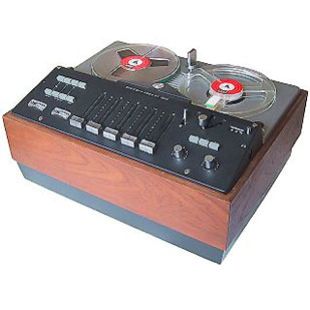
“One of the best semi-professional fully transistorised hi-fi stereo tape recorders. It has professional data for speed, wow and flutter that meet international standards for studio tape recorders. New modern design concepts distinguish the Beocord 2000 de Luxe K from conventional tape reorders. Here are some of them: 4-track recording/2-track and 4-track playback; built-in 4-channel mixer section with twin faders for both mono and stereo recordings provides individual control and mixing of microphone, gramophone, radio and line signal inputs.
These faders make it possible to balance channels during recording. An aurally compensated twin fader makes it possible to balance playback volume levels, too. These features permit recordings of every kind, such as Multi-playback, or sound-on sound; that is, rerecording from one track to another whilst making another recording on the other track.
Synchro-playback – this feature consists of synchronising two recordings on separate tracks which you do wish to mix by recording, and may be used for language laboratory purposes and for automatic control of lantern slides. Echo – adding echo to both mono and stereo recordings. The amplifier equipment is an outstanding new system consisting of no less than seven fully transistorised easily replaceable amplifier units.
Monitoring: separate records and playback heads with individual amplifiers permit both before-the-tape and off-the-tape monitoring. Power output is 2 x 8 watts undistorted.
Frequency response: 7.5″/sec 30-20 000 Hz (+/- 2 dB: 40 – 16 000Hz), 3.75″/sec 30 – 16 000 Hz (+/- 2dB: 40 – 12 000Hz), 1.7/8”: 50 – 8 000Hz (+/- 2 dB: 50 – 6 000Hz)
Recording level is indicated by two illuminated V.U. meters which indicate the sum of signals in each of the two tracks that can be recorded simultaneously.
Slack absorbers: Two smooth-running specially engineered slack absorbers take up slack, ensuring absolutely smooth starting and stopping at all tape speeds.
Electronic protection circuit prevents damage due to electrical overloads. No other tape recorder in this price bracket has these professional standards for electrical and mechanical specifications. Fine low-noise tape drive motor mounted on rugged non-torsion steel chassis. Four tape heads, 4-track recording but – a remarkable feature – the instrument plays back both 2-track and 4-track tapes.
The erase head (long-life dual-gap ferrite erases “right to the bottom” (70dB). The 2000 de Luxe permits recording from one tape recorder to another, parallel recording on a number of tape recorders, and simultaneous copying of both tracks. The Beocord may also be used as: public address system, permanently installed hi-fi control centre, and orchestra and guitar amplifier.” – taken from the 1967 – 1968 Bang & Olufsen product catalogue .
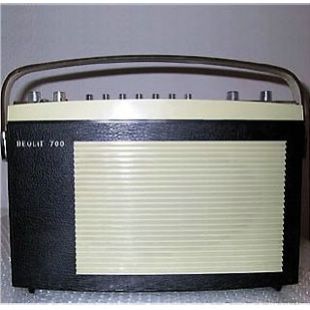
Beolit 700: equipped with FM, LW, MW and SW (the 49 metre waveband) this portable radio offered excellent audio quality and had good ability to pick up even faint radio signals/stations.
The radio had a leather handle and case and came equipped with two extendable FM antennas. It included connections for an extra antenna, an extension loudspeaker and connections for tape or record deck. The Beolit 700 could run off batteries, making it truly portable. It accommodated six size D, 1,5V batteries.